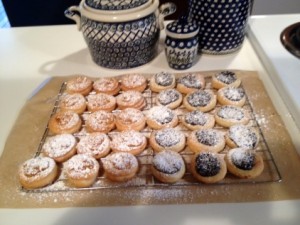Informant: “When [my children] were growing up and their teeth fell out, we would tell them to put the tooth under their pillow, and during the night the tooth fairy would come and leave a dollar under their pillow and take the tooth.”
Collector: Where did you first hear about the tooth fairy?
Informant: “Well, I first heard it from my mother when I was little. My mom told me to take the tooth and put it in this little pouch with a picture of a tooth on it, and when I woke up there would be a quarter in there. I guess the tooth fairy has upped the amount of money she gives up nowadays [laughs].”
Collector: Do you know why the tooth fairy wanted teeth?
Informant: “Oh that’s actually a really good question, I’m not really sure… Wow, that’s weird, we’ve been doing this for who knows how long, and no one’s ever asked what she does with the teeth. I guess I just never thought to ask because for me it was always just you wake up and ‘ooh! A Quarter!’ and then not really think about it. I’m not even sure if she actually needed the tooth, I remember one time I actually physically lost my tooth, and I was really bummed because I wouldn’t get my quarter, so my mom told me to put a white bean under my pillow instead, and that was supposed to work because the tooth fairy would think it was a tooth or something. Actually, now that I think about it, I think I remember hearing that she used the teeth to string necklaces or make stars or something like that”
Informant is a middle aged mother of three who lives in the suburbs in the Midwestern United States. She identifies as of “American” heritage, which she bases on her admission that she never particularly looked into her family’s European heritage. The informant’s daughter is a recent college graduate.
Collector Analysis: This particular folklore is actually (in the collector’s opinion) fairly widely spread in the United States, and in fact this collector actually heard a similar story growing up. The most curious aspect of this story is that most of the people who have heard of the tooth fairy have little to no idea why this fairy is collecting teeth. Of course, the experience of losing one’s baby teeth as a child is a nearly universal aspect of human life, and it is quite possible that this story originated as a way to encourage children to report their lost teeth to their parents, who of course would be interested in the dental health and developmental progress of their children. It also may have been meant as a way to encourage children to remove their loose teeth, as it is possible that keeping a loose tooth in one’s mouth for too long could potentially cause health and/or hygiene complications.

